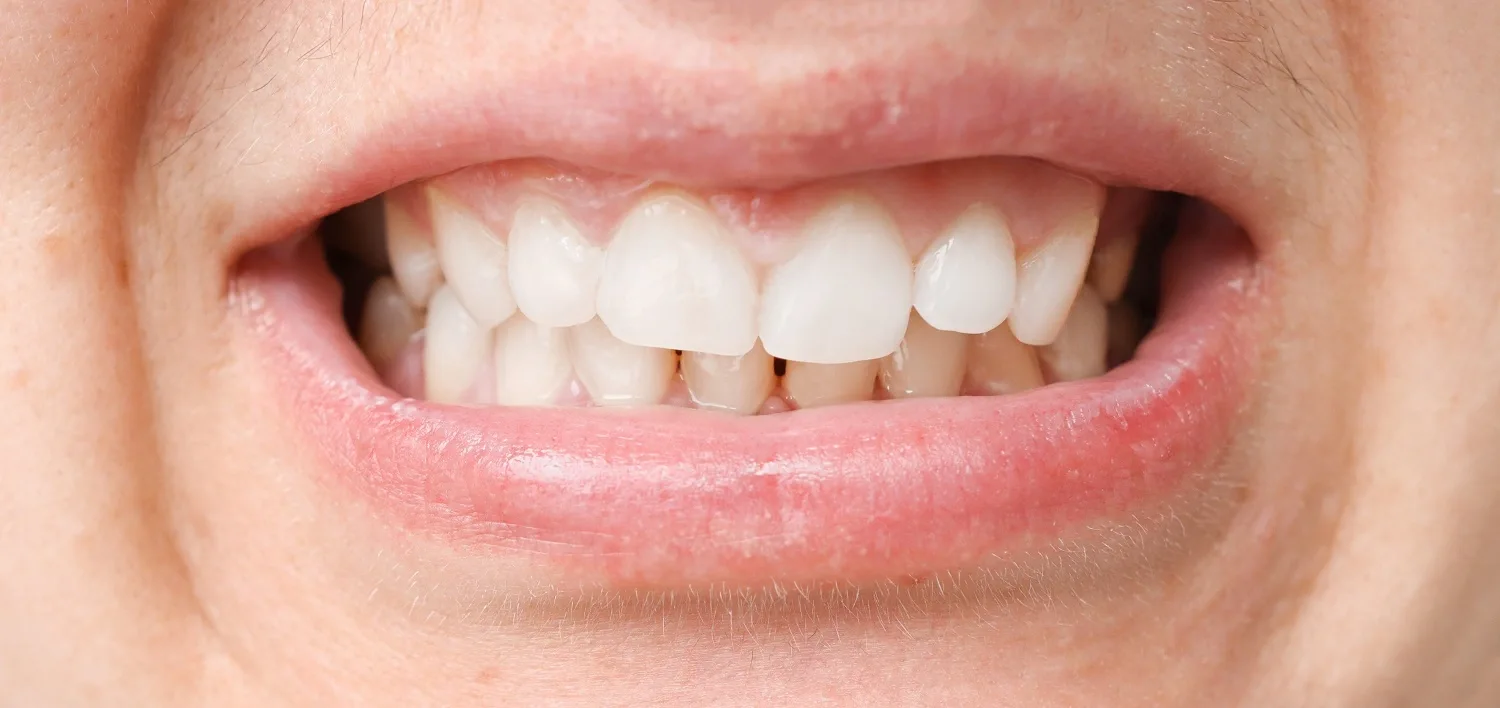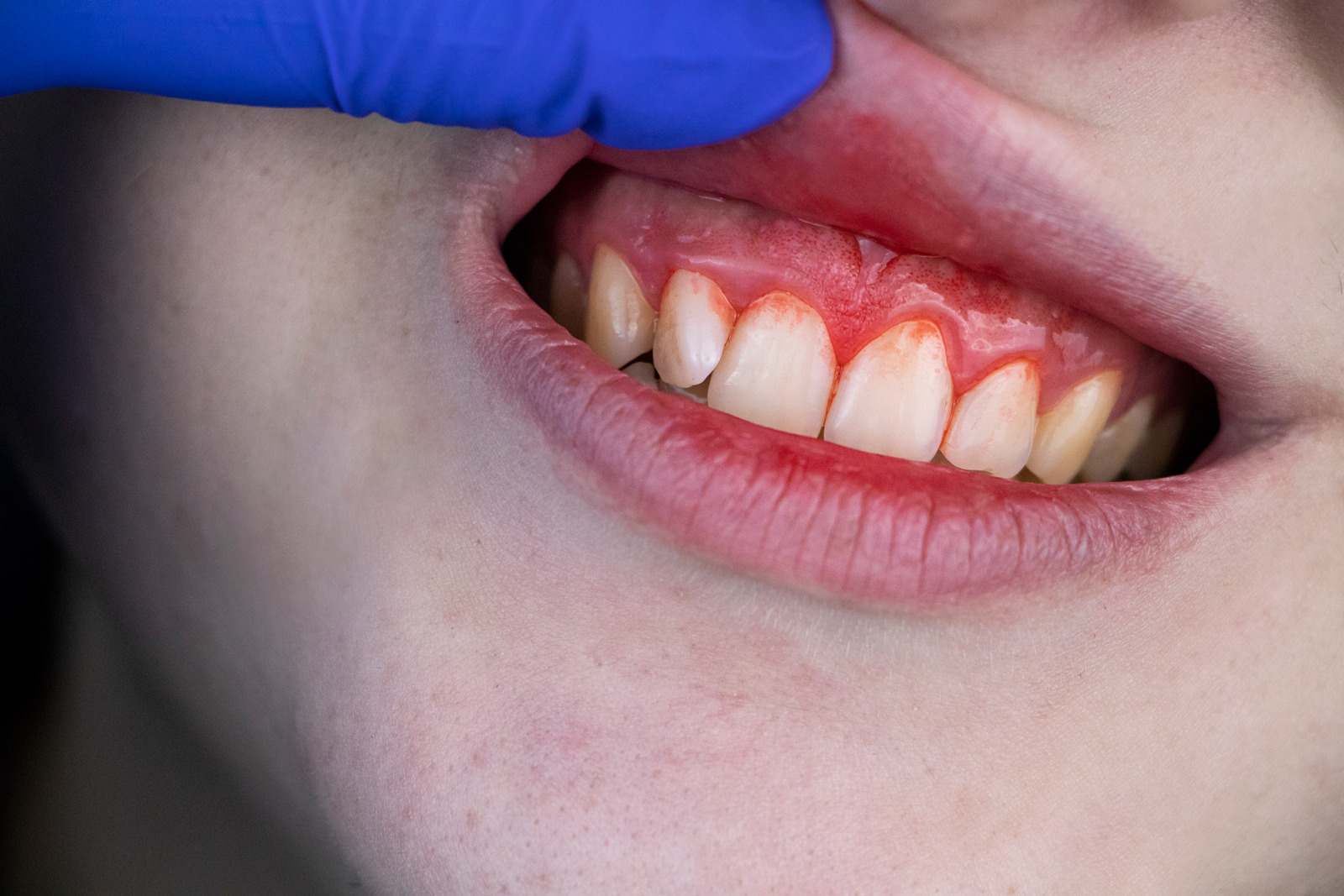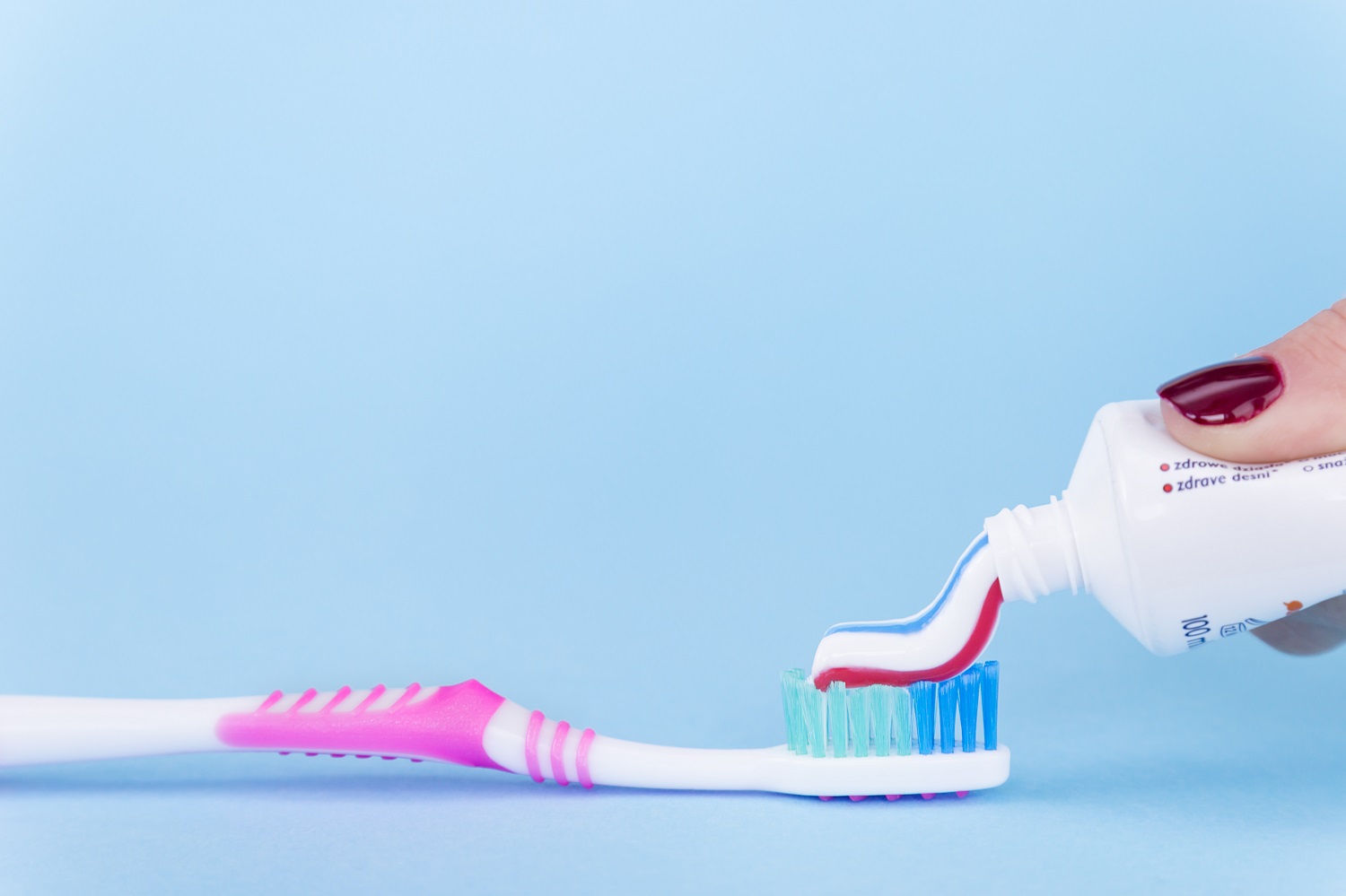Last Updated on: 4th December 2024, 04:33 pm
The recession of the gums occurs when affected or atrophied gum tissue detaches from the tooth, making the tooth look longer or exposed. Even the root of the tooth may be seen. This retraction of the gums becomes an aesthetic problem when the roots of the teeth are exposed, and the risk of cavities, infection, and loss is imminent. When gum recession occurs, “pockets” or gaps form between the teeth and the gum line, which facilitates the accumulation of disease-causing bacteria. Left untreated, the supporting tissue and bone structures can be severely damaged, ultimately leading to tooth loss.
What is Gum Recession?
Also called gingival recession, gum recession is a progressive disease that entails gum loss, causing the root of the tooth to become exposed. This leads not only to appearance consequences but also compromises oral health if not stopped in time.
You may have tooth sensitivity when eating and brushing, pain or bad odor from the infection or decay, and one or more teeth may be involved. Gum recession is classified as mild, moderate, and/or severe.
Who is Affected by Gum Recession?
Gum disease can affect anyone at any age; however, in older adults over 65, it becomes more common. The following symptoms or habits at risk of developing this condition:
- Suffering from periodontal disease
- Wearing braces or other orthodontic devices
- Chewing tobacco
- Having a lip or tongue piercing
- Aggressive tooth brushing
- Poor oral hygiene
How common is gum recession?
It is a very frequent oral problem that affects 88% of people over 65 years of age and 50% of the population between 18 and 64 years of age. The presence and extent of gingival recession increase with age.
What are the Symptoms of Recession of the Gums?
Sometimes people affected by this dental disease do not care about the condition, or they may not even realize that their gums are receding.
People with receding gums may experience the following symptoms:
- Bleeding after brushing or flossing
- Red and swollen tissue
- Bad breath
- Sore gums
- Visible recession
- Exposed tooth roots
- Loose teeth
- Sensitivity to heat, cold, or something hard
- Sensitivity during dental hygiene
If not treated promptly and properly, it can cause serious oral health problems, such as bone loss, tooth mobility or sensation of movement, and even tooth loss.
What are the Causes and/or Factors of Gum Recession?
It is common to associate poor oral hygiene with gum recession since it is mainly caused by periodontitis, an advanced form of gingivitis. This initially appears with an accumulation of bacteria and plaque inside the gums, which after a time and without removing them become tartar. It causes the gums to recede, and when it progresses, it can generate pockets between the teeth and the gums. This engenders abscesses and infections.
This gum retraction can be associated with different factors:
- Brushing too hard or aggressively
- Accumulation of dental plaque or tartar
- Periodontal disease
- Trauma or injury to the gum tissue
- Abnormal positioning of the teeth (misalignment)
- Smoking or chewing tobacco
- Lip and tongue piercings
- Age
- Oral hygiene
On some occasions, people have very thin and sensitive gum tissue due to a genetic predisposition, which causes the gums to recede.
Other risk factors that could predispose to developing gum recession are:
- Patients with diabetes
- Medications that cause xerostomia or dry mouth
- Autoimmune diseases such as lupus and HIV
- Hormonal changes in women
Diagnosis of Gum Recession
When you schedule your regular appointment with a dentist or when you notice bleeding and inflammation in the gums, take heed. It is possible that you are displaying gum recession and have not noticed it. Note that bone loss is common when it occurs.
You will notice that your dentist will take measurements of the periodontal pockets around each tooth, since, in healthy teeth, it can measure 1-3 mm; however, with gingivitis these pockets may measure 4 mm. If you have periodontal disease, they may measure 5 mm or larger.
Note: After the gums have receded, unfortunately, they will not grow back. You could take some preventive measures and carry out effective treatment.
Sensitivity Caused by Gum Recession
This condition is often painful and uncomfortable; therefore it is appropriate to seek resources to help minimize sensitivity and pain. The symptoms are caused by the fact that the roots of the teeth are not covered with protective enamel but cement, which is not as strong. In this case, the dentist will apply a fluoride varnish or other desensitizing agent to reduce the discomfort associated with receding gums. Another option is the use of a local anesthetic so that discomfort decreases during cleaning.
What toothpaste should I use if I have receding gums?
It is important to use a desensitizing toothpaste to help reduce the symptoms of pain and discomfort presented when the gums recede.
Toothpastes that contain ingredients such as potassium nitrate, stannous fluoride, arginine, and strontium chloride will help calm the nerves inside the teeth. This should have a greater effect when used for a long time. Note that it may take a few weeks for the effect to appear.
Gum Recession Treatments
Mild gum recession does not always require treatment. For these cases, your dentist may indicate or recommend practices to improve and stop the recession. However, in more advanced cases, specific treatment methods may be recommended:
-
Medications
Depending upon the degree of advancement of the recession disease, if an infection is present, it is best to administer oral medications for pain management and antibiotics to combat it.
Other medications that may be used:
- Topical gel antibiotics
In the event that gum recession has been caused by periodontal disease, deep cleaning procedures such as scaling and root planing should be performed to eliminate it. It must be done under a local anesthesia; and after finishing the cleaning, the dentist will indicate the application of a local antibiotic to the gums to facilitate recovery.
- Antiseptic chips
- Mouthwash with antimicrobial
- Enzyme suppressors
-
Desensitizing agents, varnishes, and adhesives
Applied to the teeth and gums, such agents will improve the symptoms of pain and sensitivity of the exposed root, thus facilitating dental cleaning and brushing.
-
Restoration
Sometimes the dentist can camouflage the recession area with a tooth-colored composite resin. This covers the exposed root of the tooth, making it less noticeable and more comfortable.
-
Porcelain or composite
Dentists sometimes use a special material the same color as the gums to fill in the spaces where the gums are receding.
-
Removable veneers
Made of acrylic or silicone, they are superimposed on the teeth affected by the retraction, artificially replacing the gum that has receded.
-
Orthodontics
If a tooth is crooked, tipped or turned, it can cause gum recession. In these cases, braces may be an option. Once the tooth is moved into proper alignment, the gum margin can be corrected over time.
-
Surgery
When the cases are very complex or very advanced, this is a good treatment option with two methods: flap surgery and grafting.
In flap surgery, a deep cleaning is performed to eliminate bacteria and the accumulation of tartar inside the gums; lifts the gums and then replaces them when finished. Teeth may look longer after surgery because the gums fit tighter around them.
Graft surgery is the most common option and the choice of most dentists since it is the most predictable and long-lasting treatment for gum recession. The surgery involves replacing missing gum tissue. The graft is usually taken from the roof of the mouth or can be donated by a human donor. Once it overlaps the correct place, it is sutured.
The recovery time will depend upon the procedure performed, how many teeth are involved, where the graft came from, and the age of the patient, among other factors. Generally, people who have this surgery recover within two weeks.
How can I Prevent Receding Gums?
Gum recession cannot always be prevented, especially if you are genetically predisposed since gum tissue is very thin. However, you can significantly reduce the risk of infection-related gum recession by practicing proper tooth and gum care. For example:
- Brush your teeth well twice a day.
- Floss once a day.
- Use an antimicrobial mouthwash twice a day.
- Follow your dentist’s recommendations for dental cleanings. (Many people can keep their gums healthy with cleanings every six months, but some may need more frequent visits.)
- Use a soft-bristled toothbrush.
- Do not smoke or use chewing tobacco.
To avoid any harmful situation with your gums, it is best to visit your dentist regularly.
Contact us
If you have any questions about this or other topics, you can contact us at Channel Islands Family Dental as well as our page on Facebook. We look forward to your visit and we will make a timely diagnosis. Our dentists in Oxnard, Santa Paula, Ventura, Newbury Park, and Port Hueneme will be able to guide you toward the best treatment to take care of your health and give you back your best smile.
Bibliography
1. Jati AS, Furquim LZ, Consolaro A. Gingival recession: its causes and types, and the importance of orthodontic treatment. Dental Press J Orthod. 2016 Jun;21(3):18-29. doi: 10.1590/2177-6709.21.3.018-029.oin. PMID: 27409650; PMCID: PMC4944726. (Consulted on Nov 10, 2022). Available in: https://www.ncbi.nlm.nih.gov/pmc/articles/PMC4944726/
2. García-Rubio A., Bujaldón-Daza AL, Rodríguez-Archilla A.. Gingival recession: diagnosis and treatment. Advances in Periodontics [Internet]. 2015 Apr [cited 2022 Nov 11] ; 27(1): 19-24. Available at: http://scielo.isciii.es/scielo.php?script=sci_arttext&pid=S1699-65852015000100003&lng=es. https://dx.doi.org/10.4321/S1699-65852015000100003.
3. Marks Hedy. receding gums. WebMD (online). Published on Oct 31, 2021. (accessed on Nov 10, 2022) Available at: https://www.webmd.com/oral-health/guide/receding_gums_causes-treatments
4. MacGill M. Everything you need to know about receding gums. Medical News Today (online). Posted on Aug 29, 2022, (accessed on Nov 10, 2022). Available in: https://www.medicalnewstoday.com/articles/312992
5. Cleveland clinic (inetnet). Gum Recession. Posted on Apr 14, 2022, (accessed on Nov 10, 2022). Available in: https://my.clevelandclinic.org/health/diseases/22753-gum-recession
6. Cherney K. Receding Gums. Healthline (online). Posted on Sep 17, 2018, (accessed on Nov 10, 2022). Available in: https://www.healthline.com/health/dental-oral-health-receding-gums


















